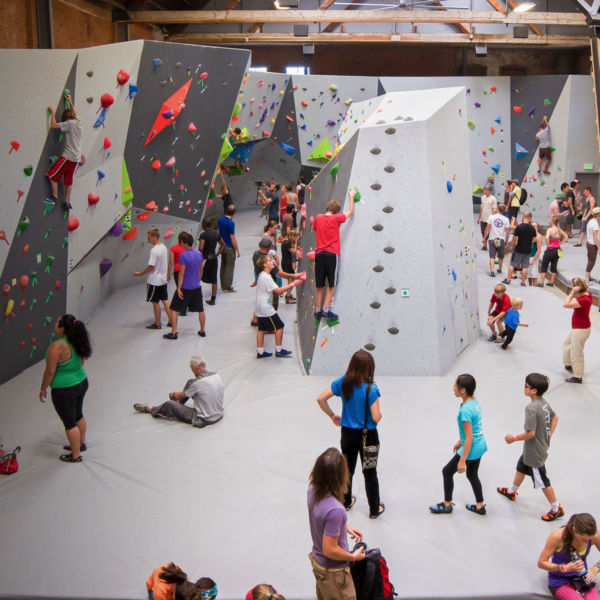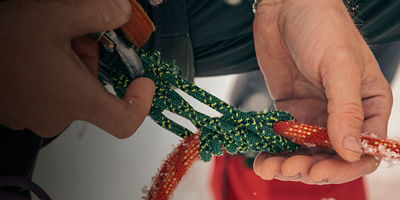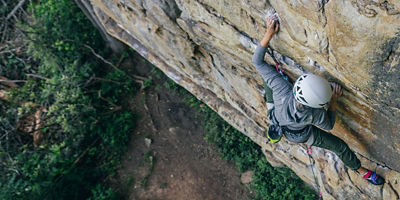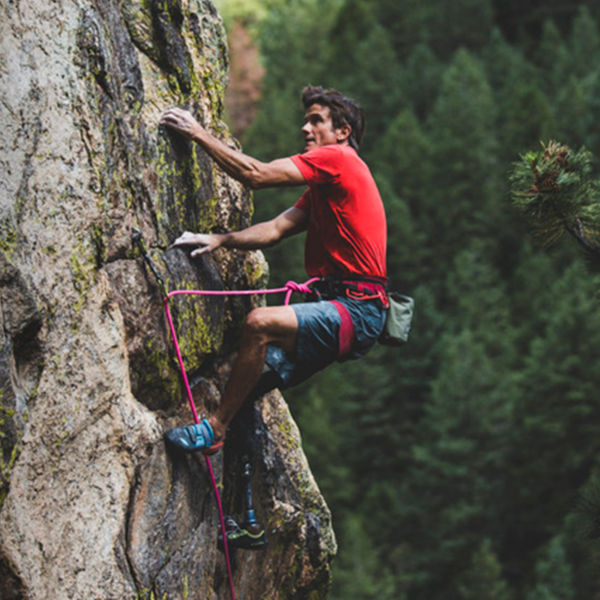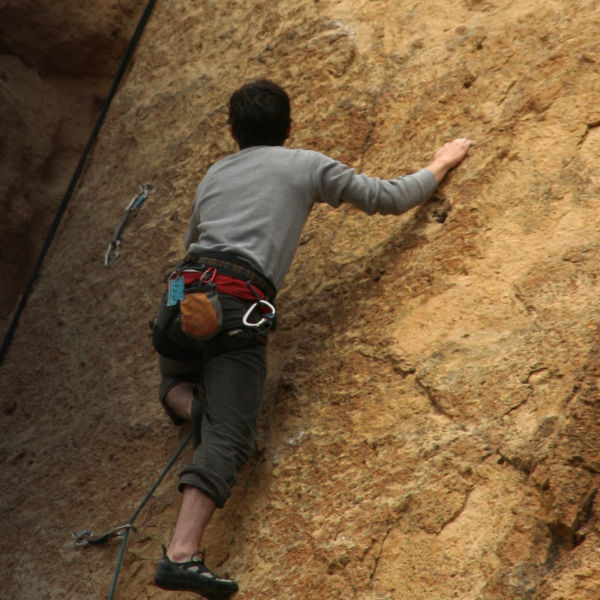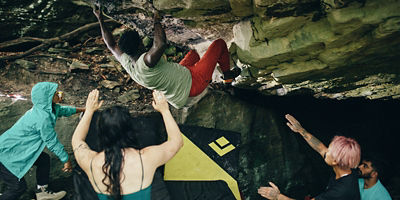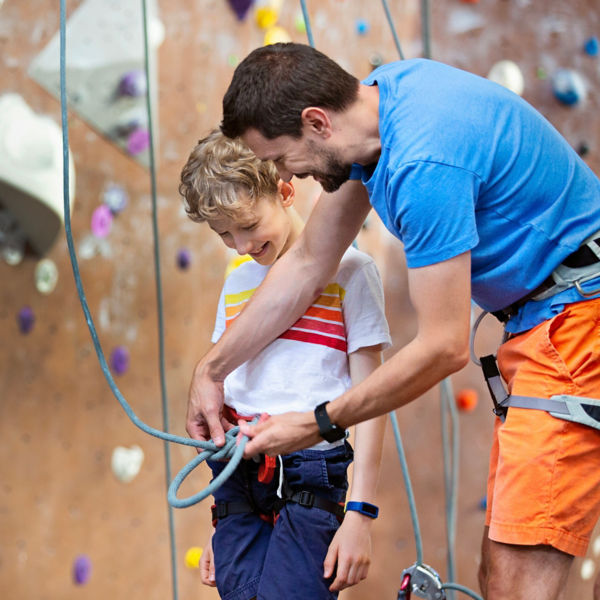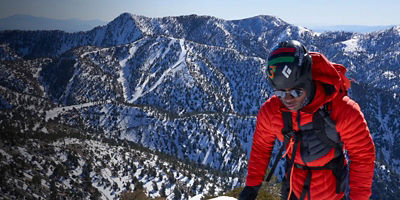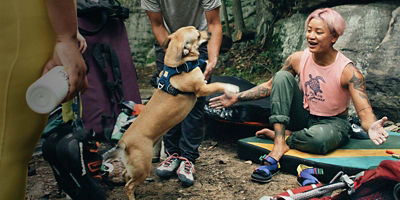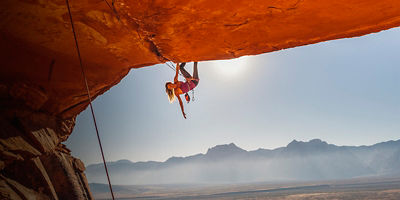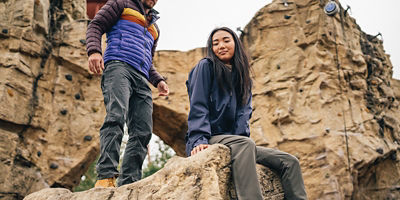
For many climbers, purchasing a rock climbing rope is like unwrapping one of Willy Wonka’s golden tickets: It’s often the final item you need to unlock a world of adventurous outdoor routes, not to mention lead-climb in the gym whenever you please.
However, buying the best rock climbing rope to fit your needs is no small hurdle. So much of your safety depends on your rope, and there are tons of sizes, lengths, and types to choose from. Here’s what you need to know to make a smart choice buying:
- Why diameter matters in rock climbing ropes
- How to choose a rope length
- What UIAA Safety Certifications mean
- The difference between half ropes, twin ropes, and single ropes
- Other features to consider
- How to choose a rock climbing rope
Why Diameter Matters in Rock Climbing Ropes
Rock-climbing ropes get their strength from a thick core made of twisted yarns, encased in a “sheath” that protects the core. Most ropes are made of the same material—nylon—which means that their strength comes not from material differences but from the thickness and density of the core. (There are some exceptions listed in the section below on UIAA safety certifications.)
Pros and Cons of Thick Ropes
Generally, the thicker the rope, the more durable it will be. However, thicker ropes—between 10 and 10.7 mm in diameter—can be a pain to drag up wandering or low-angle rock faces and may not fit in all belay devices (be sure to check manufacturer recommendations for your device before you buy a rope). Thick ropes also tend to be heavier. However, they’re a great choice for frequent top-roping, climbing in sandy terrain, and other types of climbing that can quickly wear down a rope.
Pros and Cons of Thin Ropes
On the other hand, thinner ropes—between 8.9 to 9.6 mm—encounter less friction against the rock, feel light, and can be a great choice for climbing sport routes at your limit. Their light weight can also make them a good option for alpine routes with long approaches. However, skinny ropes may be too thin for certain belay devices to grab securely—be sure to check the recommendations for your belay devices before you use them.
How to Choose a Rope Length
For most climbers, this is a simple choice between the two most widely available lengths of rock climbing rope: 60 meters and 70 meters. 60-meter ropes are less expensive and weigh less than their 70-meter counterparts. However, some longer routes require a 70-meter rope (or, less commonly, an 80-meter rope) to lower or rappel to the ground. This is usually marked clearly in guidebooks. Check the areas where you’ll be climbing most frequently to make your choice.
If you’re only looking for a gym-climbing rope, you may want to save money by going even shorter—most gyms only require a 30- or 35-meter rope. Check with your local gym first.
What UIAA Safety Certifications Mean
When you buy a rope, you’ll see lots of technical specifications that can look like gibberish. The truth is that any rope certified by the UIAA (Union Internationale des Associations d'Alpinisme) is rigorously tested and determined safe for climbing. However, these specs can offer some clues as to how durable a rope will be and how it will feel to fall on. Here are the basics.
Sheath Percentage: This is the proportion of the rope that is sheath. A higher percentage could indicate that the rope is more abrasion-resistant, but thicker sheaths also tend to be stiffer and harder to handle.
Impact force: This has to do with how much force is imparted to the climber—as opposed to absorbed by the rope—during a fall. Compare several ropes. The one with the lowest impact force will be the stretchiest, and therefore the least likely to give you whiplash during a big fall.
UIAA falls: The UIAA rates each rope for a certain number of falls. However, the falls they test in the lab create more force than most actual climbing falls ever do, so this is more of a relative statistic useful for comparing one rope to another. More UIAA falls may indicate that a rope is more durable. (PSA: Always check your rope for damage after a big fall.)
Dynamic elongation: This is how much the rope stretches during its first UIAA fall test. More dynamic elongation means a “softer catch,” i.e. a less jarring fall. You want this number to be moderate—around 25 to 35 percent. If your rope is on the stretchier side, just make sure your belayer is mindful if you’re falling near the ground or a ledge.
Static elongation: Static or “working” elongation is how much the rope stretches naturally when you’re just hanging on it, as opposed to falling. You want a lower number here.























